The Plunge is a low-maintenance ice bath tub I’ve been using as part of my wellness routine since November 2021. It features a sleek design, a relatively quiet but powerful chiller that can cool water to 39 degrees (in all but the hottest climates), and a best-in-class water filtration system that combines a 20-micron filter with ozone to keep the water sanitary for several months.
Ice baths have numerous health benefits, and I use The Plunge several times per week to improve my resilience, support my immune system, recover from workouts, and better manage my stress. It’s easy to use and doesn’t require a lot of ongoing maintenance, and I love that it’s ready whenever I want to hop in.
This review will tell you everything you need to know about The Plunge, including why I chose it over a DIY ice barrel or a more expensive cold plunging system. I’ll also talk about why I’m considering upgrading from The Plunge to the new Plunge All-In, the company’s latest-generation cold water immersion tub.
The Plunge
Summary
The Plunge is a reasonably priced cold water immersion tub that requires very little ongoing maintenance thanks to its advanced water filtration and ozone-based sanitation system.
My Plunge Review After 2+ Years
I took my first cold plunge at Dave Asprey’s Biohacking Conference in Orlando, in the summer of 2021. After that experience, I wanted to make cold plunging a part of my wellness routine and I started doing research on how to accomplish that.
After a few weeks of going back and forth between building a DIY cold plunge tub and buying one, I decided to purchase one because I wanted a low-maintenance system that wouldn’t require constant water changes.
The three cold plunges I considered were:
- The Plunge by Plunge
- Filtered Forge by Morozko Forge
- Ice Barrel by Ewing Acquisitions
I ended up purchasing The Plunge because of its combination of cost and value: it gets plenty cold, requires very little maintenance, and is reasonably priced.
Pros
- Features powerful water filtration and sanitation.
- Cools water to as low as 39 degrees and keeps it at that temperature indefinitely.
- Works both indoors and outdoors (even during winter).
- Available in an XL version to accommodate taller people.
- Available with an optional heater (if you also want to use it as a hot tub).
Cons
- Doesn’t get as cold as some other cold plunge tubs.
- The standard model may not be long enough for people over 6 feet tall.
- The chiller isn’t WiFi enabled and doesn’t support scheduling.
- Some novice plungers might find the tub design more intimidating than a barrel-type setup, which allows you to stand up.
The Plunge has a powerful chiller that cools water to as low as 39 degrees. It also has a best-in-class filtration system, which keeps the water clean and sanitary by utilzing both a sediment filter and ozone treatment. The filter physically removes debris from the water, while the ozone safely destroys pathogens, such as viruses, bacteria and other organic compounds upon contact.
That’s one of the main reasons why I chose The Plunge, and why I still think it’s a better option than most of the competing products on the market. The chiller and filtration system both work so well that I never have to worry about whether the water is cold and clean. And as a result, I’m more likely to use the tub on a regular basis. Plus, there is essentially zero ongoing maintenance required.
Another thing I like about The Plunge is its sleek design. Knowing my wife, I suspect she wouldn’t have been happy if I proposed putting an old chest freezer in our backyard, and some of the other cold plunges on the market are frankly boxy and ugly — obviously designed with an eye more toward function that form. The Plunge has a sharp, clean look that works well in many environments.
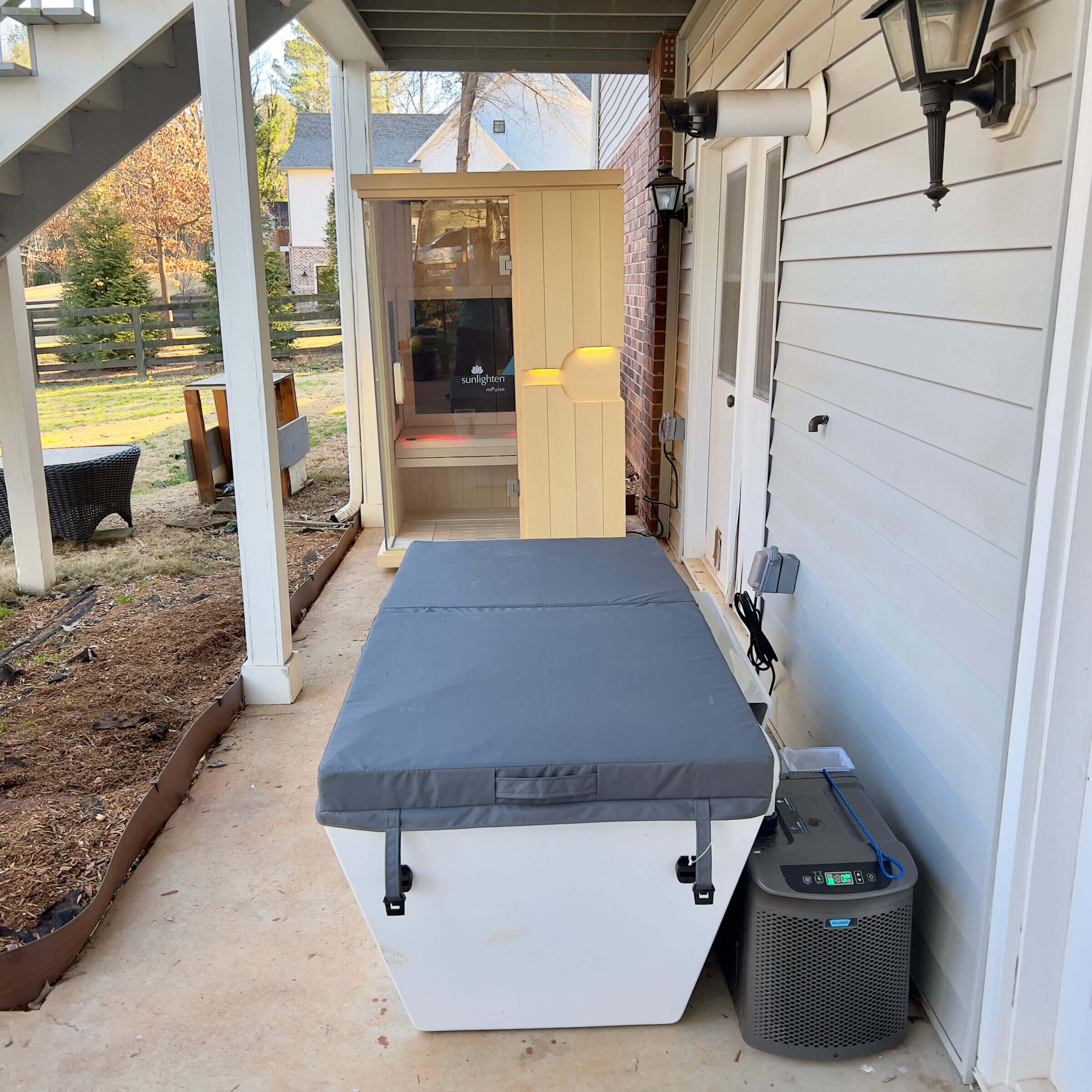
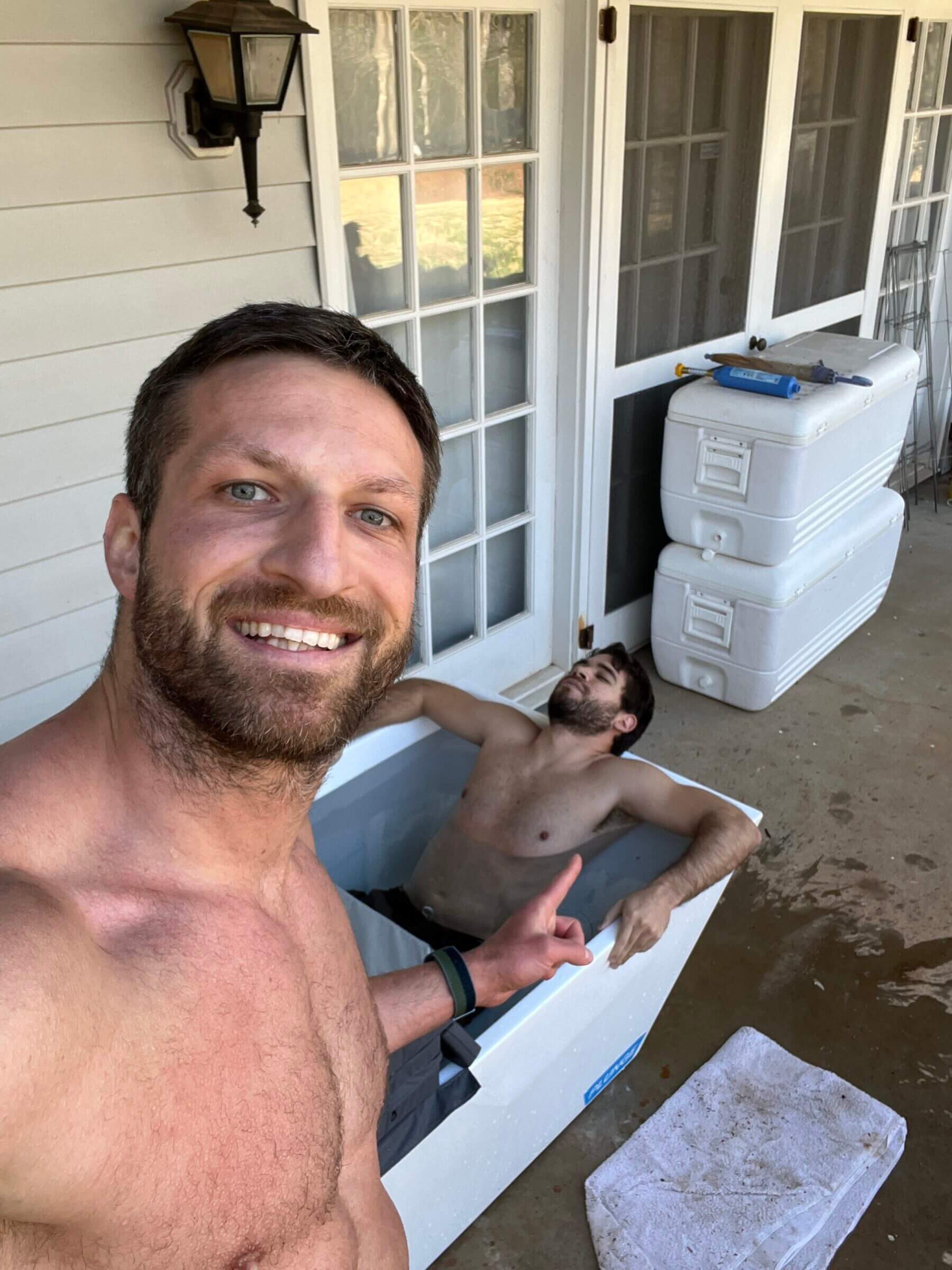
It’s been several years since I purchased The Plunge and I still use it weekly. The only minor regret I have is that I didn’t get the XL version, which offers more legroom. I’m six feet tall and have to choose between my toes and my knees sticking out of the water when I’m inside the tub.
Delivery and Setup

I purchased The Plunge in 2021, during the height of the global supply chain disruption. As a result, it took nearly two months for my tub to arrive. These days, the company says delivery times within the United States are about 14 days or less on average.
One aspect of the delivery that pleasantly surprised me was that the FedEx driver didn’t just dump the pallet with the tub in my driveway (as once happened with a sauna cabin I had purchased), but instead wheeled it to our backyard, where I wanted to install the tub. After he dropped it off in the exact spot that I showed him, he took all the packaging material back, so that we didn’t have to fill our trash cans with styrofoam and cardboard boxes.
I learned after the fact that all of that is part of Plunge’s shipping policy, which I greatly appreciate.
Once FedEx left, I finished setting up my Plunge by removing all the accessories from the tub, connecting the first of the two water lines (as indicated on the control unit/chiller), attaching the sediment filter, and plugging the chiller in to a nearby ground-fault circuit interrupter (GFCI) outlet (similar to the one you might have in your bathroom or other wet areas).


Then I attached the supplied water filter cartridge to my garden hose, filled up the tub, attached the second water line and turned on the chiller, which primed the built-in pump.
After that, I dialed in the target temperature (39 degrees) and waited for the water to cool down overnight.
It’s worth noting that there are no special electrical requirements for The Plunge (except for the GFCI). The standard Plunge requires a 10 amp outlet, while the Pro and All-In versions require a 15 amp outlet (which is standard in modern homes). In other words, there shouldn’t be any need to get an electrician out to add a dedicated circuit.
Hardware and Accessories
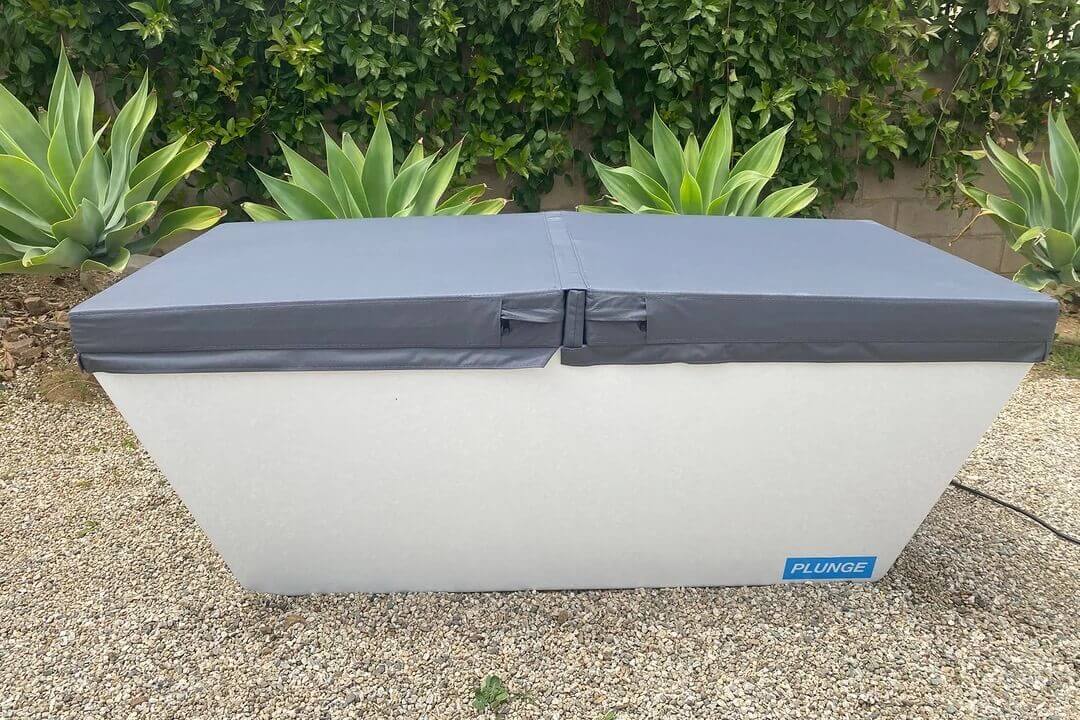
The Plunge consists of a long-lasting acrylic tub with an ergonomic shape, plumbing attached to the back of the tub (which is hidden by a plastic cover), and a chiller with a circulation pump and water sanitation feature.
The entire system weighs approximately 150 pounds empty and 1,000 pounds when filled with water. So if you’re thinking about placing the tub on a deck or raised structure, make sure that it can handle the extra weight.
Besides the main hardware, The Plunge comes with a couple of accessories, including a wrench to replace the water filter, a spare five-micron filter, a charcoal filter you can attach to your garden hose to fill the tub, a skimmer net to scoop up any floating debris, a cell phone holder and an insulated cover to prevent insects from getting into the water.
It’s worth noting that the insulated vinyl cover comes with keys to keep your kids (or smart pets) from removing the cover and getting into the water.
Temperature Settings
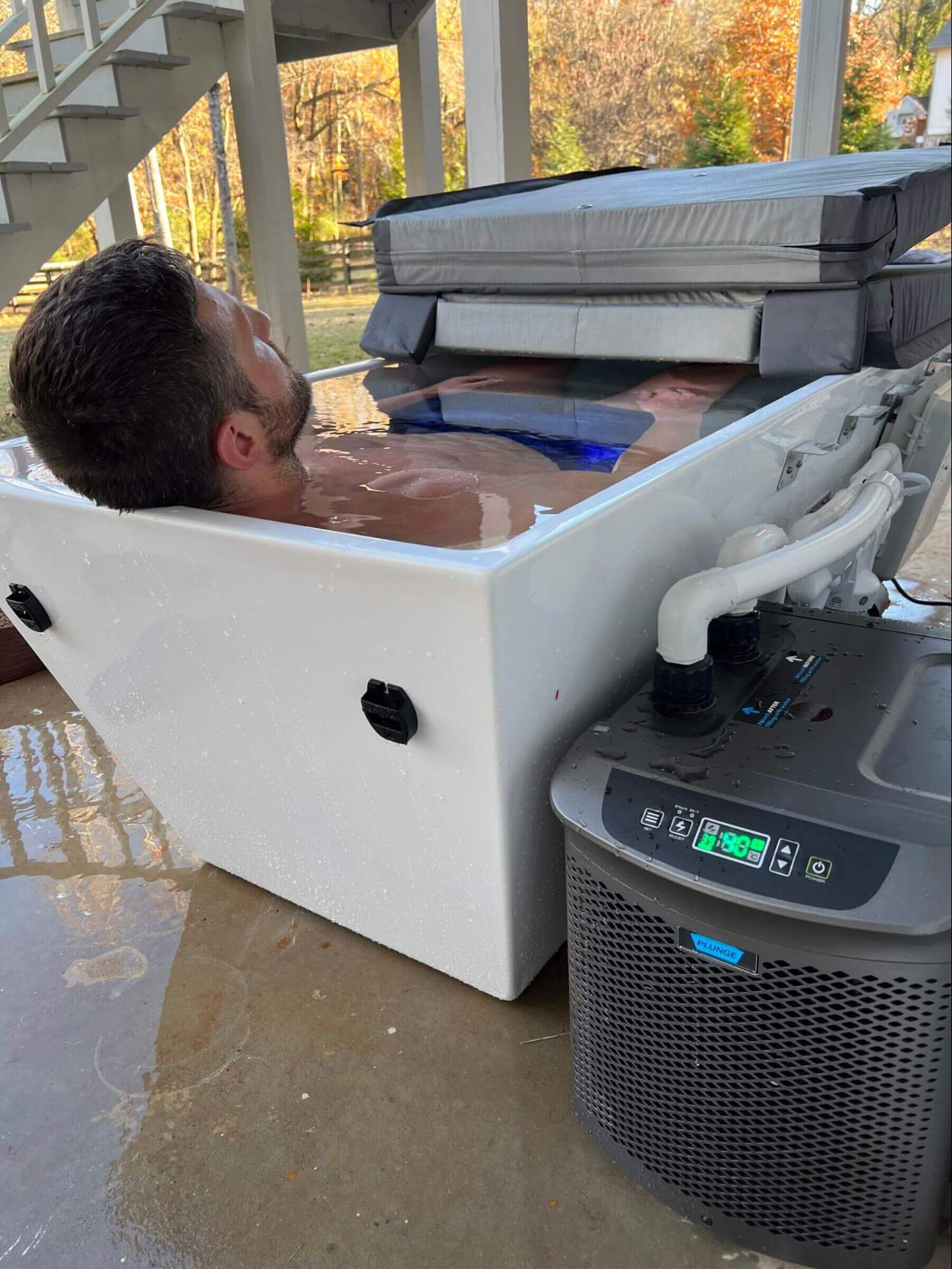
One of the most important aspects of cold water therapy is the water temperature. The lowest temperature you can set The Plunge to is 39 degrees Fahrenheit (3.89 Celsius). While that’s plenty cold for most people, it’s not as cold as a classic ice tub or the system from Morozko Forge (which cools water down to 33 degrees).
The million-dollar question is whether there’s any measurable difference between plunging at 33 degrees compared to 39 degrees, as far as health benefits are concerned.
Unfortunately, I have not found any scientific studies comparing the health benefits of different water temperatures. However, you could argue that the colder the water, the higher the perceived stress for your body, which could potentially lead to greater benefits as your body adapts.
I’ve taken plunges in 33-degree water and 39-degree water, and both were a shock to my system. But I can’t say that my plunge in the colder water was noticeably more difficult than the one in water a few degrees warmer. I’m sure I would have been able to feel the difference in temperature if I had stuck my hands in both tubs at the same time, but looking back, it’s difficult for me to recall the difference.
The bottom line is that unless your name is Wim Hof (a.k.a. the Iceman), you’ll be plenty cold in 39-degree water. As you get used to being submerged in uncomfortably cold water, you can simply prolong your sessions until you start shivering. That’s usually a good indication that you’ve reached your limit and should get out of the water to avoid hypothermia.
If the optics of sitting in a real ice bath are appealing to you, you can also dump a bag of ice into the tub a few minutes before you take your plunge. Aesthetics aside, this would have the effect of lowering the water temperature to below 39 degrees. Given how well The Plunge keeps water cold, it’s possible that at least some of the ice could remain for several days, depending on the ambient air temperature.
Maintenance
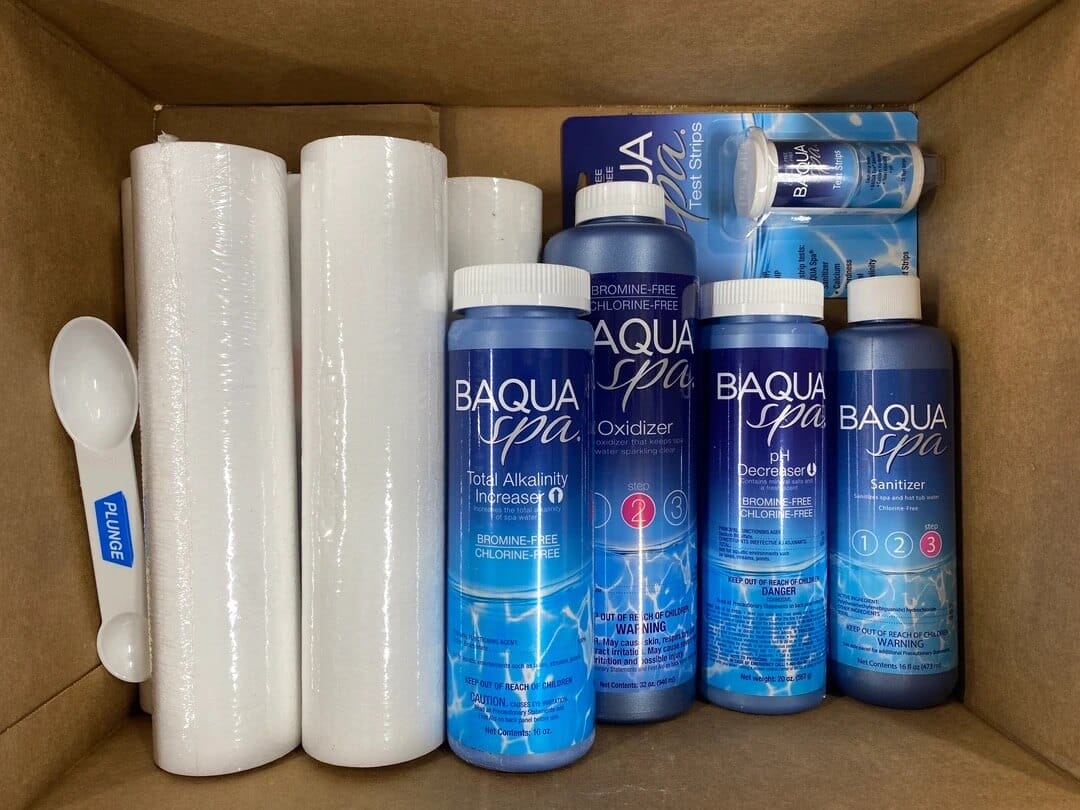
One of the main reasons why I decided to purchase The Plunge was the relatively low maintenance level involved.
The Plunge has a built-in, two-tier filtration and water treatment system that consists of the following:
- 20-micron water filtration.
- Ozone sanitation.
The combination of the filter, the sanitation features, and the water’s near-freezing temperature ensures that neither bacteria, mold or viruses can grow. As a result, you don’t have to replace the water as often as you do with most other cold plunge tubs or ice barrels. (I replace the water about once every six months.)
Additionally, you can purchase a water maintenance set directly from Plunge that contains six replacement filters and three chlorine-free and bromine-free treatment solutions to prevent waterline deposits, to keep your water clear (by oxidizing organic compounds), and to add another layer of effective bacteria control.
The sanitizer is probably unnecessary considering that The Plunge already sanitizes the water using ozone. Still, you can use the waterline control and oxidizer to keep the tub and water sparkly and clear for aesthetic reasons.
I test the quality of the water inside my tub every two weeks using test strips that came with the maintenance package, and I add a tablespoon or two of hydrogen peroxide to the water to keep it clear.
Additionally, I replace the sediment filter cartridge once a month to ensure proper water flow. Approximately once a year (or if I notice reduced water pressure from the jets inside the tub), I open the water pump and remove any hair or other debris that might have accumulated. Cleaning the pump takes about five minutes and doesn’t require any tools or special skills.
It’s worth mentioning that early models of The Plunge (such as the one I have) came with a UV bulb to further boost the chiller’s water sanitation capabilities. However, the company decided to remove the UV bulb from its current product lineup for maintenance reasons (I suspect).
As you might know, UV bulbs have a limited lifespan of approximately 10,000 hours, after which they must be replaced. Telling customers to check their UV bulbs every year, and then replacing them (if necessary), probably created unwarranted support work. Since the ozone does an excellent job of killing off any pathogens that might get into the water, I think this was a fine change that doesn’t notably impact the tub’s performance.
Cost (Is It Worth It?)

High-quality cold plunges aren’t exactly cheap, which is why so many people try to build one themselves out of old chest freezers, trash cans or plastic barrels.
I considered doing that as well, but ultimately decided to purchase a plug-and-play system for safety (bacteria, electrical shock hazard) and maintainability reasons.
The standard model of The Plunge (the one I got) retails for $4,990, but the company offers the ability to pay via monthly installments (if you qualify).
Shipping is included in that price, and if you use promo code MK, you get $250 off your purchase. Importantly, this promo code is stackable — meaning it provides additional savings on top of any discounts or sales Plunge happens to be offering.
For reference, The Plunge Pro costs $5,990, The Plunge Pro XL costs $6,990, and the Plunge All-In tops out at $8,990.
None of The Plunge models are available on Amazon or other third-party outlets — you can only purchase them on plunge.com.
Warranty
Each non-Pro plunge used in a residential setting comes with a one-year limited warranty that you can extend by purchasing a protection plan (see below). Note that using a non-Pro plunge in a commercial setting voids your warranty.
The Pro plunges also come with a one-year warranty, but you can use them in a commercial setting. Much like the non-Pro model, you can extend the initial warranty by purchasing an optional protection plan.
Depending on the model you choose, you can also purchase an extended warranty to protect your plunge for an additional three or five years. I didn’t get the protection plan with our plunge.
One important note is that your warranty begins on the date you purchase the Plunge, not the date that it’s delivered. Since Plunge usually takes around three weeks to fulfill orders, that means you’re losing a not insubstantial portion of your warranty period.
How to Choose the Right Version
| The Plunge | The Plunge Pro | The Plunge Pro XL | Plunge All-In | |
|---|---|---|---|---|
| Lowest temperature | 39 F | 39 F | 39 F | 37 F |
| Cooling speed | 2 to 4 degrees per hour | Up to 9 degrees per hour | Up to 9 degrees per hour | Up to 9 degrees per hour |
| Hot option | Yes | Yes | Yes | Yes |
| Setup time | 20 minutes | 20 minutes | 20 minutes | N/A |
| Filtration | 20-micron filter, ozone | 20-micron filter, ozone | 20-micron filter, ozone | 20-micron filter, ozone |
| Capacity | 75 gallons | 75 gallons | 100 gallons | 100 gallons |
| Legroom | 56 inches | 56 inches | 61 inches | 64 inches |
| WiFi | No | No | No | Yes |
| Price | $4,990 | $5,990 | $6,990 | $8,990 |
If you’ve looked into The Plunge already, you’ve probably noticed that the company sells different models, including models with larger tubs and better cooling performance.
The Pro models can reduce the temperature of the water by up to 9 degrees per hour, whereas the non-Pro models’ cooling speed is limited to 2 to 4 degrees per hour. In other words, the Pro models are meant for commercial/high-use settings (over five plunges an hour), or for those who live in very hot climates that require additional cooling power.
We live in Georgia, and while it can get hot in the summer, temperatures usually don’t exceed 100 degrees. Additionally, between my wife and I (and the occasional guest who wants to try it), we usually don’t take more than two plunges per day. That’s why we got the regular (non-Pro) model.
You also have the option of adding heating capability to any of the company’s tubs.
The standard Plunge versions have customizable temperature control, which allows the water to remain at up 90 degrees. However, they cannot actively heat the water. With the heating add-on (which costs $600 regardless of the tub you choose), you can turn your Plunge into a hot tub with a max temperature of 103 degrees.
Just keep in mind that it takes about 12 hours to heat the water from 50 to 103 degrees.
As noted elsewhere in this review, we currently have the standard Plunge model. But I’m really interested in the brand-new Plunge All-In, which offers the most legroom and the best cooling performance of all the tubs in the company’s lineup.
Plus, the Plunge All-In has a WiFi-enabled chiller built into the tub, making the entire setup much slicker and easier to maintain. For example, you can easily replace the sediment filter by opening a compartment instead of digging through the plumbing like I have to do with my current setup.
The second feature of the Plunge All-In I like is the ability to control its chiller using a smartphone app. That way, I can create a schedule to turn the chiller off automatically overnight and turn it back on in the morning before I take my first plunge. Doing so can help save energy and likely extend the lifespan of the pump and the chiller. Just don’t turn off the chiller when temperatures outside are below the freezing point (to prevent damage to the plumbing).
Lastly, I appreciate that the company decided to increase the legroom in the Plunge All-In to a whopping 64 inches to make sure even the tallest people can fully submerge themselves in the cold water. For reference, I’m six feet tall (72 inches), and either my toes or knees stick out when submerging myself in the regular Plunge. That’s not terrible, but if you’re taller than I am, parts of your chest might stick out, thus negatively impacting your ice bathing experience.
The Plunge vs. The Plunge Pro XL

One downside to the standard Plunge model is its compact size, which means that people who are 6 feet or taller may have a hard time submerging their entire body (including their knees) in the water.
The company realized the problem and released the Cold Plunge Pro XL, which is 3 inches taller, 6 inches longer and 1.5 inches wider than the standard Plunge.
Besides the difference in size, The Plunge Pro XL also comes with the Pro chiller, which cools water at a rate of 9 degrees per hour.
How the Plunge Compares to Alternatives
While I’ve outlined the thought process that led me to purchase The Plunge over some of the alternatives I considered, below is more information about how The Plunge compares to other types of cold therapy I’ve tried.
| Maintenance | Cost | Benefits | |
| The Plunge | ★★☆ | 💰💰💰 | ★★★★ |
| Morozko Forge | ★★☆ | 💰💰💰💰 | ★★★★ |
| Renu | ★★☆ | 💰💰💰💰 | ★★★★ |
| Ice Barrel | ★☆☆ | 💰💰 | ★★★★ |
| Chest Freezer | ★☆☆ | 💰💰 | ★★★★ |
| Cold Shower | N/A | 💰 | ★★☆☆ |
| Cryotherapy | N/A | 💰💰💰 | ★★★☆ |
| Cold Air | N/A | N/A | ★☆☆☆ |
The Plunge vs. Morozko Forge

As mentioned earlier in this article, I took my first cold plunge in a tub made by Morozko Forge at a Biohacking conference. In retrospect, I’m glad I bumped into the nice folks of Morozko because they helped me mentally prepare for the experience and walked me through it step-by-step.
If not for that guided experience, it might not have turned out to be so positive and I might not own The Plunge now.
Aside from that, I consider the stainless steel tubs made by Morozko to be of high quality, and I appreciate that Morozko’s chillers can cool the water down to 33 degrees Fahrenheit. When I took my plunge, I was literally sitting on a block of ice that had formed on the bottom of the tub.
Unfortunately, Morozko’s plunges have a couple of disadvantages, including their starting price.
The cheapest unit (the Filtered Forge) starts at $9,400, and the commercial model will set you back $17,900. That’s a lot of money! However, the residential model comes with a two-year warranty and the commercial model comes with a five-year warranty. That’s double what Plunge offers (unless you get the optional protection plan).
Additionally, neither model fits through 24-inch doorways (which are sometimes present in older houses). While that’s usually not an issue in commercial settings or for outdoor use, if you want to use your plunge indoors, you should check the width of your doorway first.
Another potentially minor issue with the Filtered Forge is that it doesn’t have an angled backrest. As a result, it’s slightly less ergonomic and comfortable to use. Of course, since you only spend a few minutes in the tub, that might not be a big deal.
Ultimately, you have to decide if spending twice the money on the Morozko tub is worth the few degrees colder it gets. For me, it wasn’t.
Note: Using the discount code KUMMER500 will get you $500 off any Morozko tub.
The Plunge vs. a DIY Ice Bath
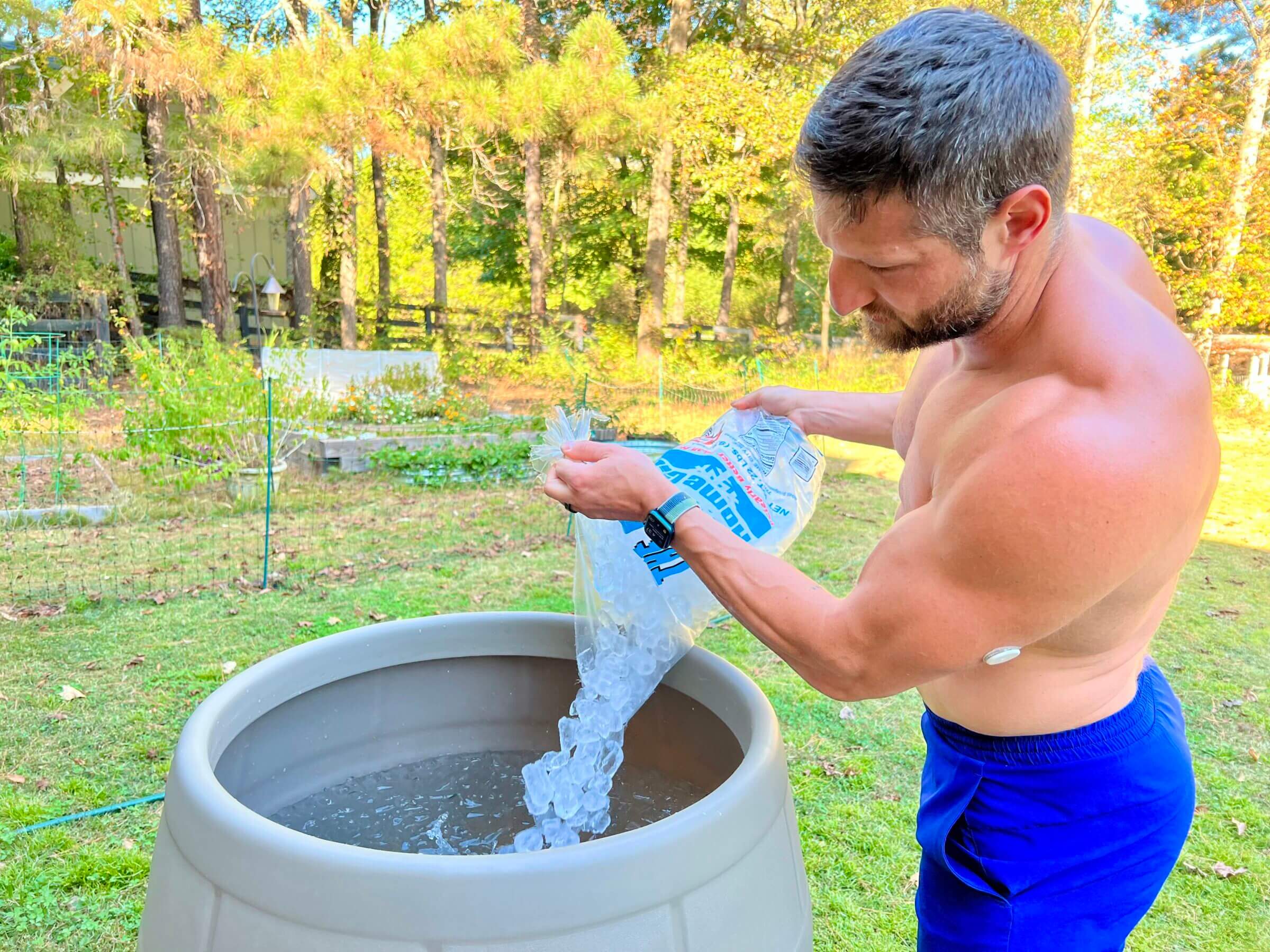
If the initial investment required to purchase The Plunge is out of your budget, building your own ice bath using an old wine barrel or chest freezer may be a viable option.
The number one benefit of a DIY solution is the comparatively low initial investment. You can pick up an old wine barrel and clean it out for less than $200 at Lowe’s (that’s what I did when I built a plastic-free and maintenance-free watering solution for our chickens) and you probably won’t spend much more for a used chest freezer.
The problem with a DIY barrel-based ice bath is that you have to pour in fresh ice before every plunge, because it melts quickly. So you need a good supply of ice if you intend to take regular plunges.
I use my Plunge on an almost daily basis and it would be incredibly inconvenient to run to the store and get more ice every day.
Commercial solutions like the Ice Barrel can maintain their water temperature for one to three days, depending on the ambient temperature. So you might be able to get away with adding ice only every other day or so.
That’s why many people convert an old chest freezer into a cold plunge: because the freezer can keep the water cold and you don’t have to worry about adding ice all the time.
The downside to using a chest freezer is that it’s a potential safety hazard (if you forget to unplug it before jumping in). Additionally, you’ll probably have to seal the inside first to prevent water from leaking out.
The problem with both solutions is that you have to replace the water regularly (unless you’re chemically treating it) and scrub the inside of the container. This extra maintenance effort is what made me decide to invest in The Plunge instead.
Update: A few months after publishing this review, I decided to purchase the Ice Barrel to see if it could serve as a lower-cost alternative for people who want to leverage cold therapy but who don’t have the budget to get The Plunge. You can learn more about how the two products compare in my hands-on Ice Barrel 400 review.
Cold Plunging vs. Cold Showers
Taking a cold shower is an excellent and inexpensive way to get your feet wet (pun intended) with cold therapy.
The good news is that if you’re not used to cold water, even tap water can be cold enough to offer some of the benefits of a cold plunge.
The tap water at our home is about 62 degrees in the summer, which is cold enough to make you gasp for air for a moment when you step into the shower. So there’s definitely an opportunity to improve your mental strength while you get used to it.
Additionally, the cold water causes some of your blood vessels (at least those right below the skin) to constrict. That causes an increase in blood flow when you step out of the shower or turn it back to hot water.
If you’re new to cold therapy, I recommend starting with cold showers because it’s something you can do immediately and it doesn’t cost a dime. To make it easier to get used to the feeling of cold water on your skin, you can start with hot water and then switch to cold and leave that on for 10 to 15 seconds. From there, try to increase your cold water exposure by a few seconds until you can endure it for two or three minutes.
The next step is to start with cold water from the get-go. That takes a bit of mental strength, but it’s totally worth it.
After my experience at the Biohacking conference, and before I decided to order The Plunge, I took cold showers every day. And I like to think that experience helped prepare me for cold plunging.
The downside to cold tap water, at least where I live, is that it usually doesn’t get anywhere near the temperatures of a cold plunge — and you get used to it relatively quickly, thus diminishing its benefits over time.
How I Use The Plunge
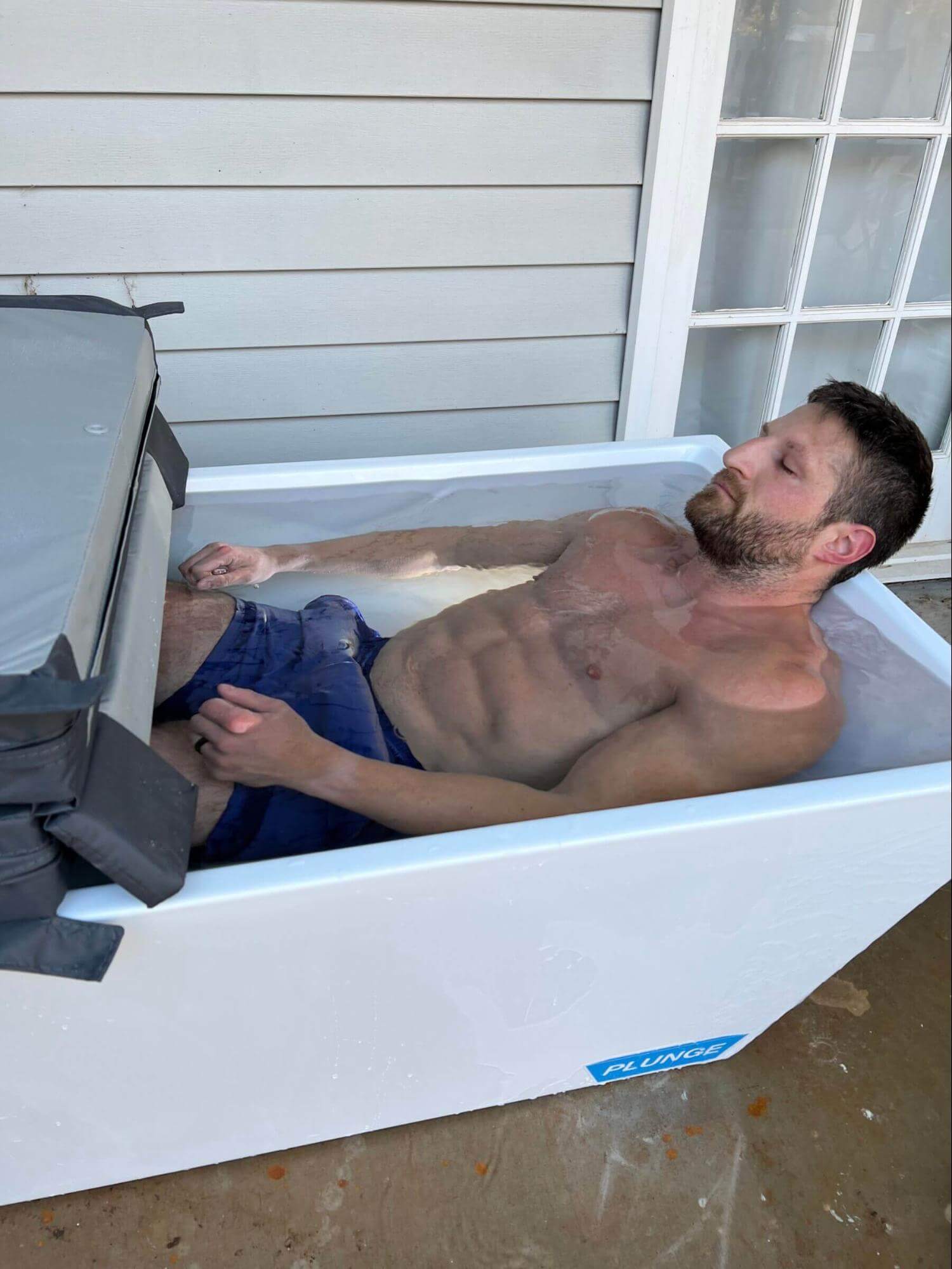

My goal with cold therapy is to expose myself to less-than-comfortable temperatures several times a week. I do that by combining cold plunging with cold showers.
During the week, I often jump into The Plunge in the morning and right before working out. Combined with a quick hot shower afterward, it prepares me for the upcoming workout by significantly increasing my blood flow. The rapid constriction, followed by dilation, also gives my blood vessels a great workout.
I also find it more mentally challenging to jump into cold water in the morning, especially when it’s already cold outside. So by exposing myself to uncomfortably cold temperatures in the morning, I can improve my mental strength while helping my body to become physically stronger and more resilient.
On days I don’t exercise, I (occasionally) cold plunge in the evening or late afternoon. At first, I avoided late plunging because I was afraid that activating my sympathetic nervous system (triggered by the fight or flight response) would negatively impact my sleep and heart rate variability at night.
However, it turned out that the better I got at managing the stress of cold exposure (primarily through deep breathing exercises while in the tub), the more relaxed I’d feel after getting out of the tub. That feeling of relaxation actually helped me to fall asleep quicker and sleep better overall.
After several weeks of regular cold plunging, I became significantly less sensitive to cold temperatures. I feel mentally stronger and I sleep better.
Aside from the change in my perception of cold temperatures, my body has actually become more resilient when exposed to the cold — as I experienced first-hand during the cryotherapy sessions I tried.
Even on the coldest setting (-225 F) and the maximum time in the cryo chamber (3 minutes), my skin temperature didn’t drop below 60 degrees. In comparison, my wife’s skin temperature dropped to 48 degrees after 2.5 minutes at -165 degrees.
As a result, I’ll continue with my regular cold plunges, especially throughout the colder months of the season, combined with sessions in our Sunlighten infrared sauna to reap the maximum benefits.
Common Questions About The Plunge
The Plunge can cool water down to 39 degrees Fahrenheit. My cold plunge usually hovers between 39 and 40 degrees. If I have friends over and we do a couple of back-to-back plunges, the water temperature might creep up to 41 degrees before the chiller kicks in to cool it back down. The brand-new Plunge All-In can cool the water down to 37 degrees Fahrenheit.
The highest temperature you can set The Plunge’s chiller to is 90 degrees Fahrenheit (32.22 C), but keep in mind that standard versions of The Plunge cannot actively heat water.
Let’s say you set your Plunge to 90 degrees (for example). In this case, the system will allow the water temperature to rise to that temperature without the chiller turning on. If the water temperature rises above your chosen setting — in this case, 90 degrees — the chiller will turn on to bring it back down to the desired temp.
In other words, while the “highest temperature” is 90, the water will only get as warm as the ambient temperature allows it to.
On the other hand, if you pay $600 for the heating add-on, the system will actually heat water up to a maximum of 103 degrees, allowing you to use it as a hot tub.
Thanks to The Plunge’s built-in water filtration and sanitation system, paired with the optional maintenance pack, you only have to change the water approximately every six months. That’s one of the benefits of The Plunge over DIY ice barrels or chest freezers that require regular refilling and/or manual sanitation.
Plunge recommends initially treating the water with a chlorine and bromine-free oxidizer and sanitizer (all part of their maintenance package) and then checking regularly using test strips to make sure your water quality is good. Depending on the hardness of your water, you might also want to add a softener.
Note that using the water treatment products is optional but recommended. Without the products, depending on your water quality and usage, you might have to change the water once every one or two months.
If you’re over six feet tall or have very broad shoulders, I recommend considering the Plunge Pro XL or the brand-new Plunge All-In (which is taller, longer and wider than the regular Plunge).
While I haven’t found any scientific studies that discuss exact timings, most cold plunging experts recommend staying in the water for two minutes or longer to obtain the maximum benefits.
If you’re just starting out with cold plunging, I recommend using a temperature that’s colder than your tap water and that makes you feel uncomfortable. Try to stay in the cold water for at least two minutes. As you get used to the cold, either increase the time you spend in The Plunge or lower the temperature gradually.
I started with two minutes at 39 degrees and gradually increased the time to 5.5 minutes. Cold plunging should feel really uncomfortable (at first), but if you start shaking uncontrollably, it’s time to get out to prevent hypothermia.
Whatever time works for you. Just keep in mind that cold plunging activates your fight-or-flight response. So if you’re not used to it, I’d probably avoid jumping into cold water right before bedtime.
Yes, you do. At least to a degree. It took me a couple of plunges to teach my brain that the initial shock doesn’t mean my life is in danger. Once I made that realization, the process became much more bearable. It’s still uncomfortable — especially after a few minutes in cold water — but I can do it now without having to give myself a pep talk first.
Cold plunging is generally safe but it is a stressor that your body might have trouble handling. If you suffer from severe sensitivity to cold, have a medical condition or are pregnant, I recommend consulting a knowledgeable medical professional first and not starting with the coldest setting.
Yes, The Plunge (including the chiller) can safely stay outside during the winter, even in freezing temperatures. However, it’s important to keep the chiller running to prevent the water from freezing in the pipes.
If you decide to unplug the chiller, make sure to properly winterize The Plunge by draining the tub and the chiller, and by removing the filter housing.
When we went on vacation during the holiday season of 2022, I drained the tub and unplugged the chiller but forgot to also drain and remove the filter cartridge. Unfortunately, my filter housing cracked during a cold spell and had to be replaced. I could have avoided that repair by following the winterization instructions.
Yes, I’d argue that cold baths are much more effective than cold air exposure for several reasons. First of all, ambient air is usually not cold enough to cool you down in a reasonable amount of time. But even if you lived at the North Pole, you’d probably get frostbite (due to the humidity) before reaping any benefits.
That doesn’t mean you shouldn’t allow yourself to feel cold on occasion (by wearing only a t-shirt and shorts in winter) but I’d recommend taking regular cold showers instead of waiting for temperatures outside to drop.
Based on my research and my personal experience with both cold plunging and cryotherapy, I’d argue that both methods offer similar benefits.
The advantages of The Plunge are that it’s likely less expensive in the long run, and submerging yourself in cold water is more challenging than exposing yourself to cold dry air. Plus, you don’t have to deal with the time commitment of visiting a cryo facility.
So if improving mental strength and resilience are your objectives, I’d recommend cold plunging over cryotherapy.
Yes, The Plunge offers more health benefits than a cold shower simply because most tap water doesn’t get cold enough to mimic an ice bath. However, as long as the tap water is cold enough to make you feel uncomfortable, you’ll get some of the same benefits, including the activation of the sympathetic nervous system, the release of stress-reducing chemicals, improved circulation and more.
Cold plunges and saunas offer similar benefits in terms of improved circulation, as well as with regard to the activation of certain proteins (heat and cold shock proteins) that boost immunity, promote hormesis and more.
However, while both methods stress the body in a positive way, they do that using different mechanisms (heat vs. cold). That’s why I recommend combining heat with cold therapy, and why I include both infrared sauna sessions and cold plunges in my wellness routine — a concept known as contrast therapy.
Final Verdict: The Plunge Makes Cold Plunging Easy
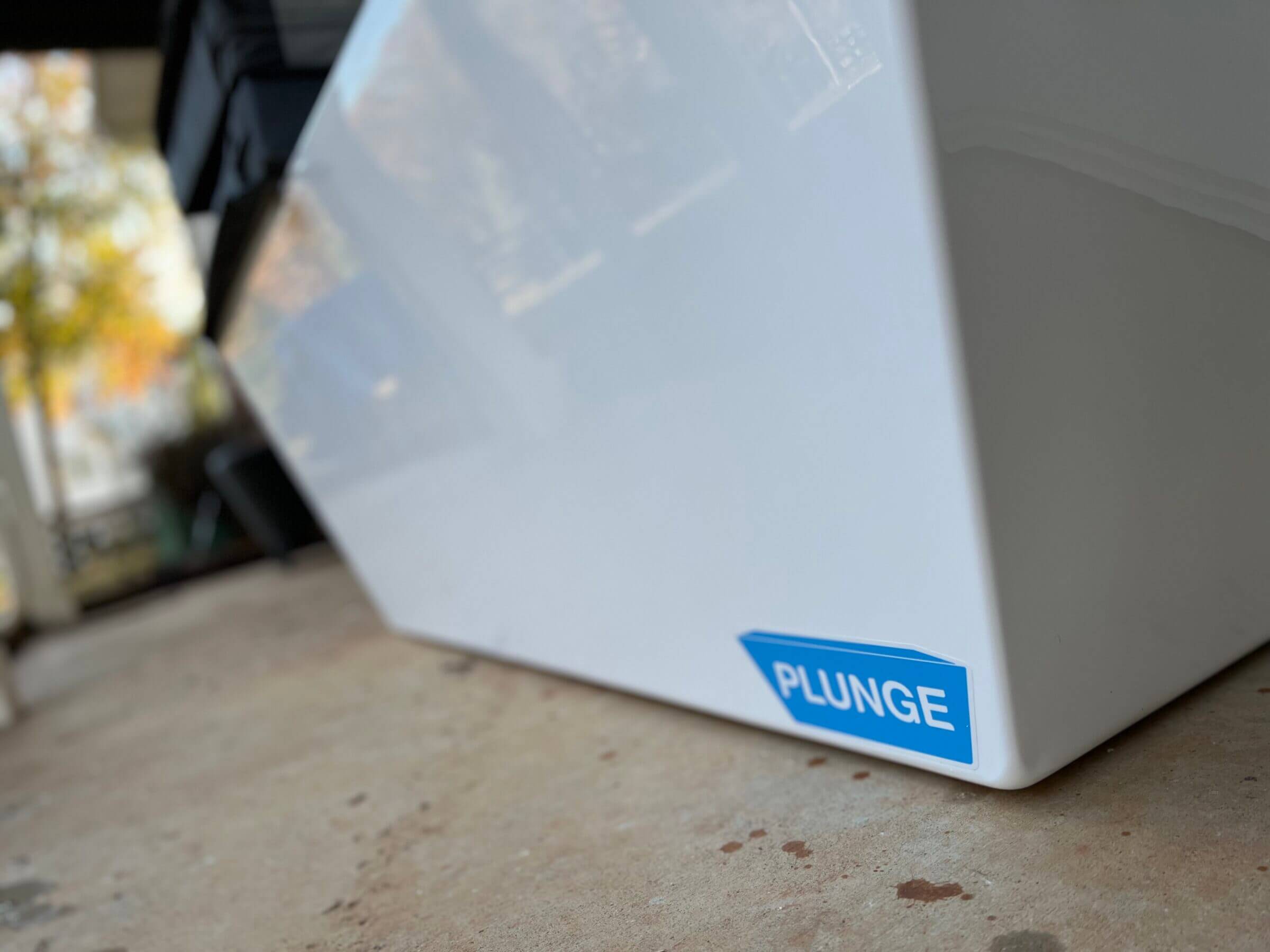
When FedEx delivered my Plunge, the temperatures where I live were in the high 30s. So after the first two or three plunges, I questioned my investment for a moment because I wasn’t sure if I had the mental strength to go from really cold air to really cold water and then back to really cold air.
But after I accepted the suck — which took about five plunges — I got excited and even euphoric about the prospect of jumping into cold water. The following days, the outside temperatures warmed up a bit and getting into the tub (and staying there for a couple of minutes) suddenly wasn’t a big deal anymore.
As I’m writing this, it’s 34 degrees outside with bone-chilling winds (which is unusual for Atlanta), and I know that it’s going to be a bit more challenging than usual to strip down outside and jump in. But I’m looking forward to overcoming that mental hurdle.
Overall, I’m glad that I made the decision to invest in The Plunge because I know how beneficial it is. I also appreciate how much mentally stronger it has made me.
A while ago, we had friends over and their 12-year-old son decided to overcome his fear of being exposed to the cold. He stayed in the tub for two minutes while going through what appeared to be the five stages of grief. But he did it, and he was so proud of himself to have overcome something that many of us will never experience. Having been able to watch that accomplishment was worth getting The Plunge.
So what are you waiting for? Next time you take a shower, turn it cold and stay there for 30 seconds or longer. I promise you, you’ll feel awesome afterward. From there, it’s only a small step to taking an ice bath.
And if you’re still on the fence, check out my in-depth article about the benefits of cold plunging to learn more about why you should make it a part of your regular regimen.
If you have any questions about cold plunging or The Plunge, just leave me a comment below!

Michael Kummer is a healthy living enthusiast and CrossFit athlete whose goal is to help people achieve optimal health by bridging the gap between ancestral living and the demands of modern society.
Medical Disclaimer
The information shared on this blog is for educational purposes only, is not a substitute for the advice of medical doctors or registered dieticians (which we are not) and should not be used to prevent, diagnose, or treat any condition. Consult with a physician before starting a fitness regimen, adding supplements to your diet, or making other changes that may affect your medications, treatment plan or overall health. MichaelKummer.com and its owner MK Media Group, LLC are not liable for how you use and implement the information shared here, which is based on the opinions of the authors formed after engaging in personal use and research. We recommend products, services, or programs and are sometimes compensated for doing so as affiliates. Please read our Terms and Conditions for further information, including our privacy policy.
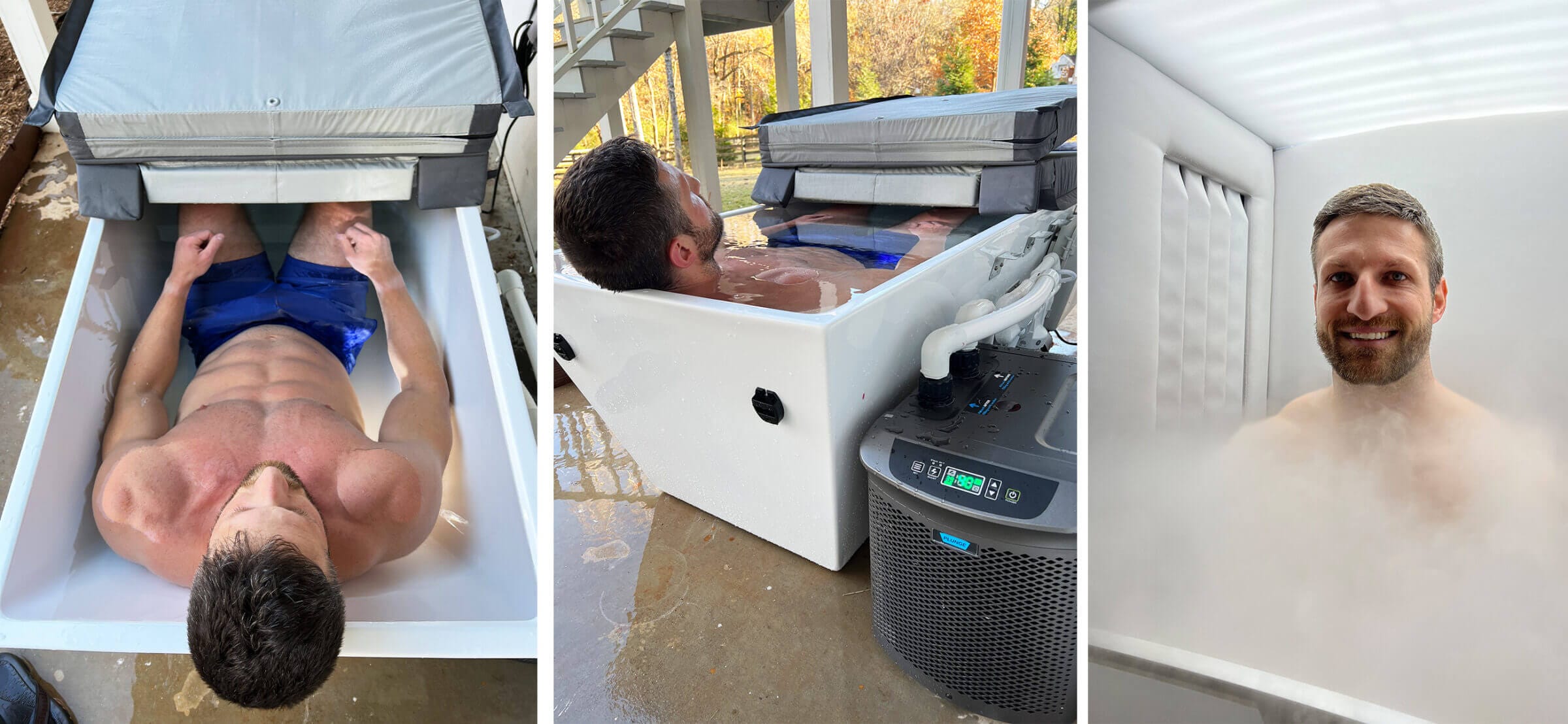
That’s all fine as long as you have no problems with your Plunge. The customer service is a joke!
I had a pump go out 2 moths ago now and still can’t get a replacement. They sent wrong replacement twice now.
Not much else matters if ya can’t use it!
Hey David,
I’m sorry to hear that. I had to deal with customer support only once (after I failed to properly winterize my plunge and the sediment filer housing cracked) and they responded promptly and sent the correct replacement part. Do you have the name of the support person you’ve been communicating with?
Hi,
Tremendous amount of great information, especially on the types of cold plunging. I love the analysis of the many different devices or units. The only thing I did not see in your article is your thoughts on someone with Reynolds doing the cold?
If you have never listened to the podcast by Andrew Huberman of Huberman Lab on cold, plunging, I would recommend it. He is more from the medical perspective since he is with Stanford neurology and ophthalmology department. However, his podcast is totally separate. I thoroughly enjoyed this article and will be passing it along to my Sons and daughters who have recently started cold plunging. I am going for my second cold plunge tonight.
One thing Huberman said was it’s better not to go into a hot shower, sauna, etc. right after your cold plunge because of a benefit that will not be utilized. You would have to listen. Huberman Lab podcast if you go to hubermanlab.com he has all sorted under categories of health.
Hey Stephanie,
I appreciate your feedback! I’m familiar with Huberman, his podcast and views on cold plunging but I disagree that you lose all (or most) benefits of you end in hot. There are reasons why you would want to end in hot, especially if you plunge close to bedtime. Obviously, it also makes a difference in how long you wait before taking a hot shower. On days I end in hot, I wait until I stopped shivering (if I shiver) before taking a shower. Plus, contrast therapy has a host of benefits for your cardiovascular system you wouldn’t achieve with only hot or cold.
That said, I don’t end in hot all the time and, instead, try to mix it up.
Cheers,
Michael